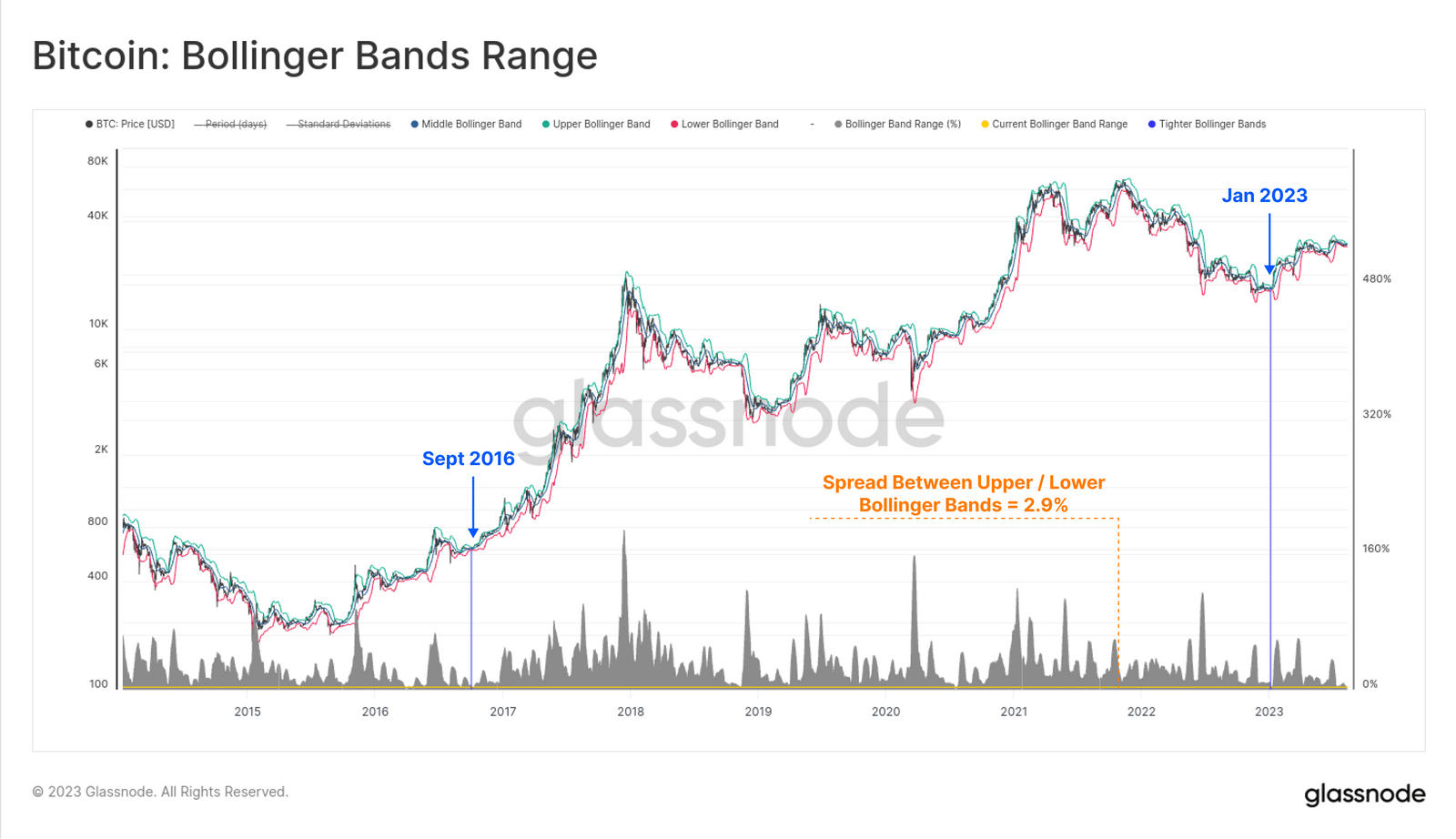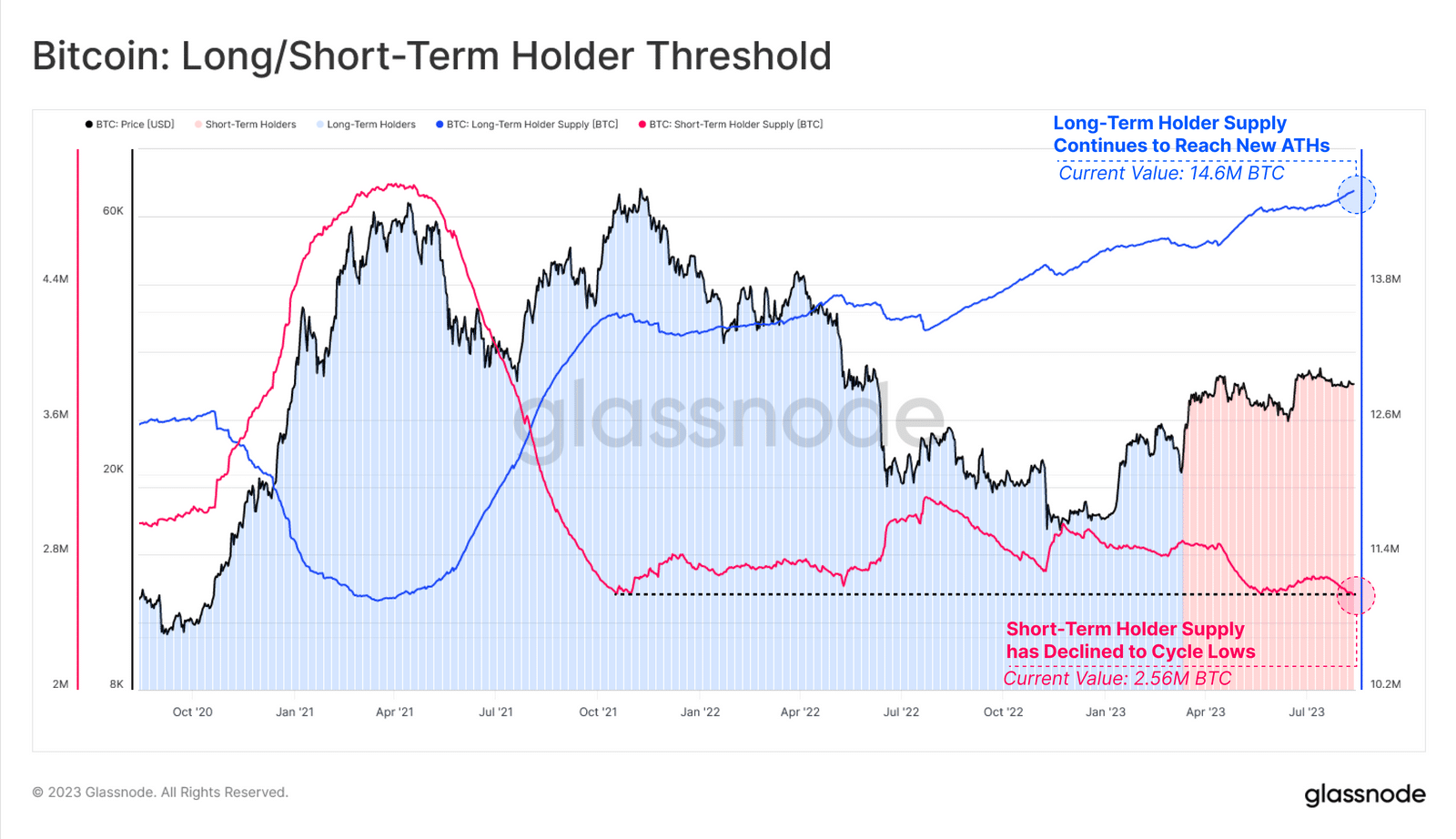Bitcoin (BTC) On-Chain Indicators Hit All Time Lows; What’s Next For BTC Price?

The Bitcoin (BTC) price consolidation over the past few weeks seems to be a never-ending wait for investors with volatility hitting rock bottom. As the BTC price continues to hover in the range of $29k to $30k, several on-chain indicators have reached a state of extreme apathy and exhaustion.
Let’s take a look at some of the on-chain indicators that hint at the lack of enough ammo for further upward price action.
Bitcoin Sees Modest Inflows
The Realized Cap stands out as a vital tool in on-chain analysis, reflecting the total capital influx since the beginning. The size and rate of change of the Realized Cap provide valuable insights, showing that over $16 billion (+4.1%) has entered Bitcoin this year.
Yet, the ascent appears gradual compared to the sharp surge witnessed in the 2021-22 upward trend. This suggests that although capital is entering, it’s happening at a relatively slow speed.

Bitcoin Volatility Compression
Bitcoin Bollinger Bands suggest that Bitcoin volatility has collapsed to historical lows. The upper and lower Bollinger Bands are separated just by 2.9%, thus, this low volatility compression was only seen on two occasions i.e. 2016 and Jan 2023.

Another way to understand the reduction in volatility (investor exhaustion) is by looking at how investors are spending their coins. Realized Value serves as a measure within this context:
- High Volatility: When there’s high volatility, investors tend to spend coins they acquired at prices much higher (resulting in losses) or much lower (resulting in profits) than the current spot exchange rate.
- Low Volatility and Exhaustion: In times of low volatility (when investors are exhausted), most of the coins being moved on-chain were likely acquired at prices very close to the current spot rate. This means that the realized profit or loss is minimal.
The Sell-Side Risk Ratio is a helpful tool to track this. It compares the absolute value of the realized profit or loss (the change in asset value) to the realized cap (the overall asset value). For short-term holders (STHs), this ratio is currently at an all-time low.
This suggests that nearly all the investors who intended to take profit or loss within this price range have already done so. As a result, the market might need a catalyst to encourage new spending, potentially indicating upcoming volatility, reports Glassnode.
Bitcoin Long-Term Holder Supply
The amount of Bitcoin held by Long-Term Holders is continuously rising, reaching a record high of 14.6 million BTC. In contrast, the supply held by Short-Term Holders has dropped to a multi-year low of 2.56 million BTC.
In summary, this indicates that Bitcoin investors are maintaining strong conviction, as very few are opting to sell their holdings.

- Breaking: VanEck Discloses Fees and Staking Details for its Avalanche ETF
- Crypto Market Braces for Volatility as BTC, ETH Options Expiry Collides $7.1 Trillion ‘Triple Witching’
- Terraform Labs Lawsuit: Jump Trading Faces $4B Case over Market Manipulation
- Coinbase Challenges US States Over Regulatory Restrictions on Prediction Markets
- Will Bitcoin Price Repeat 20-30% Crashes as BOJ Hikes Rates to 30-Year High?
- Dogecoin Price Prediction Points to $0.20 Rebound as Coinbase Launches Regulated DOGE Futures
- Pi Coin Price Prediction as Expert Warns Bitcoin May Hit $70k After BoJ Rate Hike
- Cardano Price Outlook: Will the NIGHT Token Demand Surge Trigger a Rebound?
- Will Bitcoin Price Crash to $74K as Japan Eyes Rate Hike on December 19?
- Bitwise Predicts Solana Price Will Hit New All-Time Highs in 2026
- Bitcoin Price Outlook: Capriole Founder Warns of a Drop Below $50K by 2028
















